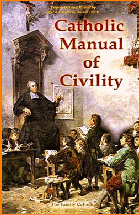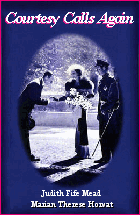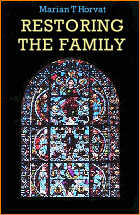Movie Review
 |
 |
 |
 |
 |
 |
 |
Mass of the Ages: Beautifully Misleading
Documentary directed by Cameron O’Hearn,
produced by O’Hearn & Jonathan Weiss, 2021-2024
Rita Stewart
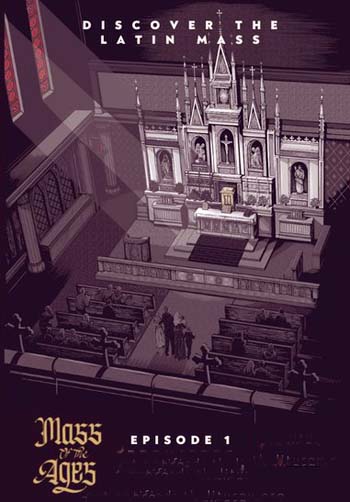
Episode 1 centers on the beauty of the Latin Mass & is the least problematic of the three
Mass of the Ages is a three-part series that aims to illustrate “what makes the Latin Mass unique, why everything changed after Vatican II, and how Catholics worldwide are striving to restore Tradition.” The first episode centers on the beauty of the Latin Mass; the second, on its inherent truth; the third, on its goodness. This is a commendable effort, and provides a refreshing counter to the spirit of our modern world.
Given that positive representations of Tradition are few and far between, Mass of the Ages aims to fill this gap.
That being said, it unfortunately falls short of its promise to provide an objective view of the crisis in the Church. Despite the many admirable aspects of this documentary, there are also some glaring omissions and non-negligible errors that the discerning traditionalist should keep in mind.
The goal of this review is not to condemn this documentary or downplay its good fruits, but rather, to clarify some points in it that may lead the faithful to adopt an inaccurate perspective.
Episode 1
Likely the most effective part of the trilogy, Episode One tells the story of a widow, Kristine Mauss. It opens with a sobering scene at a cemetery. “In traditional Catholicism I see that the end all-be all is not this Earth,” Mauss says. “[My children’s] idea of eternity, it smacks them in the middle of the eyes every day, because that’s where their dad is.”
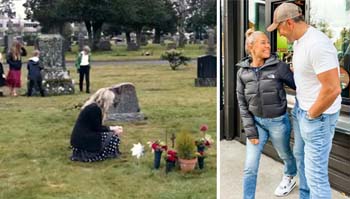
In the film, traditionalist Christine Mauss mourns her husband; today, with her new husband
In another clip, “Tonight Show” host Jimmy Fallon talks about his complex relationship with the Church. “I wanted to be a priest … I loved the Church, I loved the idea of it, I loved the smell of the incense,” he admits, referring to his childhood. “I tried to go back, when I was out in LA and I was kind of struggling for a bit. I went to church for a while, but there’s a band there now, and you have to hold hands with people through the whole Mass now. This is too much for me. I want the old way.”
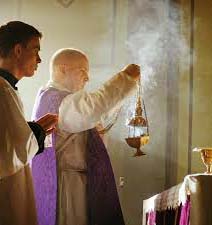
Priests testify to the awe inspired by saying the traditional Latin Mass
The documentary does not give a direct answer, but implies that the reintroduction of the Latin Mass would help to end both the ecclesiastical and temporal crisis. Enthralling scenes of the Mass, whether in magnificent cathedrals or simple monastic chapels, capture a glimpse of the marvelous and transcendent. In the background, sacred music highlights an ineffable sense of grandeur.
Several priests discuss the richness of the Latin Mass. “I wept almost to the degree I wept when I was ordained,” says Fr. Eugene Morris, describing the day he said his first low Mass. “It was just overwhelming to me how beautiful it was. It was so simple, so profound. With all the mistakes [I made], there was still something very natural to it, and I realized that I was actually able to pray.”
The documentary periodically returns to the story of the Mauss family. The husband and father, Michael, was unexpectedly diagnosed with a malignant brain tumor and died within a year. In their grief, his wife and children remembered the seriousness of life and found solace in Tradition. They encountered something they knew to be real and significant. “After Michael died, being [at Mass] was a refuge from this crazy, scary world, and it is the place I can just lay the cross down for a little bit,” his widow notes.
This first episode has an impressive ability to address questions that are relevant to Catholics and non-Catholics alike. In a world in which many suffer depression and are driven to despair, the Latin Mass provides the authenticity that souls are seeking. The documentary conveys this truth well, especially by illustrating that, in Tradition, suffering finds meaning.
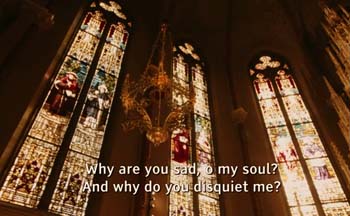
Sacral ambiences of old churches to a background of Gregorian Chant
Also, the film’s sentimental approach is almost an invitation for a bad-willed objector to counter: “In my youth, the Latin Mass was poorly said, the choir was awful, the parishioners were falling asleep, etc. The Novus Ordo Mass can be just as reverent and aesthetically pleasing as the Latin Masses in the movie.”
More concerningly, the documentary fails to acknowledge that the Novus Ordo is not the source of the Church crisis, but rather is a byproduct of the Revolution inside the Church and society. Prior to Vatican II, when the Tridentine Mass of the Ages was the only one being said in Catholic Churches throughout the world, the West was already in a precarious position. The Catholic spirit was decaying, customs were widely becoming corrupted, and people were focused on a life of pleasure.
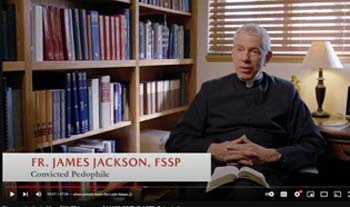
A convicted pedophile priest who was removed from the episode, a strong reminder the Mass is not the utopian solution to all problems in the progressivist Church
Liberals have taken note of this flaw in the documentary. In his review of the film for Jesuit America, John Anderson sarcastically remarks: “If only the priest would turn his back on members of the congregation, the movie’s logic goes, and recite the liturgy in a language they don’t understand, the pews would be full and the seminaries overflowing. Suicide rates would drop. Divorces would end. No one would be lonely.”
As venomous and reductive as this comment is, it does point out undeniable shortcomings in the documentary.
In the next article, we will explore how the documentary’s sympathy toward the Council as well as to Pope Paul VI demonstrates a regrettable naivete and ironic promotion of the Progressivism in the Church that caused the suppression of the Latin Mass.
Continued
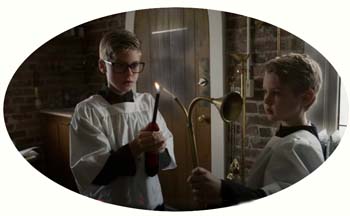
Many scenes express the sacral wonder
of the old Mass

Posted February 5, 2025
______________________
______________________



